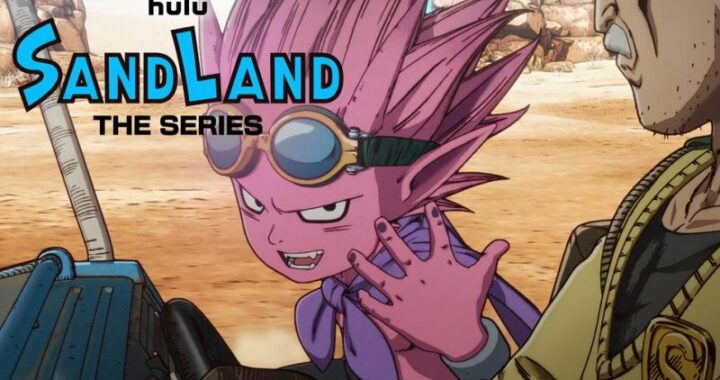 Shocking revelations about Hime’s past and Sakurashin Town’s future need to be put aside, when a hulking hoard of purely-white monsters decide to pay an unannounced visit.
Shocking revelations about Hime’s past and Sakurashin Town’s future need to be put aside, when a hulking hoard of purely-white monsters decide to pay an unannounced visit.
Creative Staff:
Writer/Artist: Suzuhito Yasuda
Translated by: Satsuki Yamashita
Adapted by: Nunzio Defilippis and Christina Weir
What They Say
The humans and demons who share the town of Sakurashin must work together when a rival mayor and a strange mystery man decide to hit Sakurashin’s demons where it hurts: by taking away their power. As Hime struggles to protect her town, the secrets of her own gifts are finally revealed!
Content: (please note that content portions of a review may contain spoilers):
If I might make a suggestion: before ever pealing back the creamy-white cover of Yozakura Quartet Volume #3, you’d be doing yourself a worthwhile favor by first returning to the previous book and reading Chapters 10 & 11. Having these two segments freshly in mind—as they are the beginning of the most current story arc—should ever-so-slightly assuage the jarring effects of Volume #3’s opening.
To be frank, the transition between books is any but smooth. Although this dissonance is to a lesser extent bolstered by the lengthy gap of time between releases, the culpability lies firmly in the jerky plotting of manga-ka Suzuhito Yasuda. Even after two previous compilations, he still struggles with delivering a consistently coherent narrative, particularly when tasked with developing story outside of action sequences.
I do respect what seems to be the creator’s attempt at building his universe through progressively linear movements, divulging information as needed, instead of coddling readers with the abundant preparatory material. The problem I repeatedly keep slamming into, however, is most of Yasuda’s revelations come via context-less exposition, where characters suddenly blurt-out grand statements absent of any noteworthy event or action anchoring meaning to their brusque dialogue.
Volume #3’s first chapter serves as an ideal example. Keep in mind, things are already somewhat disorienting, with readers being instantly thrown amidst the waning revelries of what must have been a rather ruckus party. When Akina, the book’s main human protagonist, nonchalantly drops a bomb that Hime—Sakurashin Town’s delicious knee-socked-muffler-wearing-teenage mayor—isn’t a demon, the near-crippling sensation that I missed some vague nuance in one of the previous books immediately brought reading to a halt. This is the same Hime that on multiple occasions exhibited preternatural strength and has a penchant for traversing the town by effortlessly bounding across rooftops, streetlight poles, and other lofty structures. She’s not a demon?
Well, in truth she is a demon, a fact the book wastes precious little time resolving. The issue here is that neither Akina nor other residents of Sakurashin had ever previously uttered a similar sentiment. I had taken for granted that people were aware Hime, like most of Yozakura’s characters, bore a supernatural lineage, with the only real question surrounding the precise nature of her yokai powers. Had the manga-ka just sporadically peppered notions of the perky mayor’s perceived humanity throughout prior chapters, events could have evolved naturally, instead of rushing forward on a perplexing note that ruins the volume’s initial experience.
As we delve further into the book, our characters, currently dazed and lazing about in a half-drunken stupor, are snapped back to reality, when a gigantic mound of white muscle suddenly crashes the party. This plodding monstrosity, reminiscent of some milky-mascot creature gone bad, owes its improbable existence to the mysterious robed man from chapter 11 (hence my earlier recommendation). Teamed with the soon-to-be-former mayor of a neighboring town and his spiky-haired minion, the trio abducts Kohime, the underage mayoral incumbent, and demand her safety in exchange for both Hime and the tiny captive relinquishing their roles of authority. Not overly eager to take such a request, Akina and company launch an all-out assault to rescue Kohime and vanquish a hoard of ivory behemoths.
The rest of Volume #3 is fairly conventional, comprised largely of our heroes clashing with the three kidnappers and their overgrown pets. In addition, we’re treated to several flashbacks, predominantly to explain why no one remembers Hime is a demon, but also covering the origins of her scarf and a few other intriguing matters.
For those who’ve watched the recent Yozakura Quartet anime, this volume should be familiar, as it’s the source material that was adapted into the show’s final storyline. Comparing the two versions is actually quite difficult since the villains and their motivations are entirely different. Nonetheless, a decent number of similarities exist, and with the arc left unresolved at book’s end, it’ll be interesting to see how closely events play-out.
I can not, in good conscious, cover an installment of this series without mentioning Suzuhito Yasuda’s artwork. If for no other reason, I’d continue with the manga purely for his attractive layouts and lovely ladies (of course, the prevalence of knee socks and stockings help, as well). From a technical standpoint, his illustrative prowess hasn’t noticeably grown, but what has improved is Yasuda’s overall page design and how it aids the story’s flow. Also apparent is a deeper grasp of each character’s style, with cast members rendered in stronger, more individualized detail.
In Summary:
Yozakura Quartet remains a fine looking book wrapped around an uneven story. As much as I keep hoping Yasuda will find some way to workout the narrative kinks, after three volumes, it’s hard to imagine the series ever making a complete turnaround. I do find such a thought unfortunate, because I’m steadfast in believing the manga continues to shows a lot of potential.
Content Grade: C+
Art Grade: A
Packaging Grade: A
Text/Translation Grade: B+
Age Rating: 13+
Released By: Del Rey Manga
Release Date: November 25th, 2008
MSRP: $10.99



